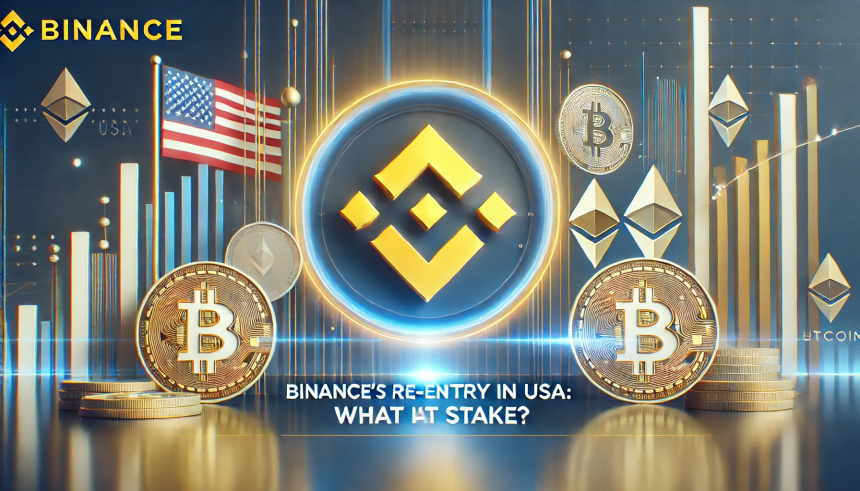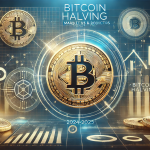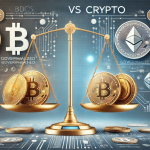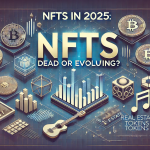Introduction
Binance, the world’s largest cryptocurrency exchange, is making a major move — re-entering the U.S. market after years of regulatory hurdles and legal challenges. This strategic comeback is happening amidst renewed discussions with the Trump administration and potential deals that could reshape not only Binance’s future but also the broader crypto ecosystem in the United States.
In this article, we will explore why Binance left the U.S., what’s enabling its return, and how this move will impact crypto traders, regulators, and competitors.
Why Binance Left the U.S. Market
Founded in 2017 by Changpeng Zhao (CZ), Binance quickly rose to dominance, offering low fees and access to a wide range of cryptocurrencies. However, as U.S. regulators tightened their grip on crypto exchanges over issues of compliance, KYC (Know Your Customer), and anti-money laundering (AML), Binance began to face serious scrutiny.
Key reasons for Binance’s initial exit from the U.S.:
- Regulatory pressure from the SEC, CFTC, and IRS.
- Accusations of serving U.S. customers without proper licensing.
- Concerns about Binance’s opaque ownership structure and lack of regulatory cooperation.
Though Binance launched Binance.US as a separate entity to comply with U.S. regulations, the parent company’s ties and influence remained under question, limiting its operations in the country.
What’s Behind Binance’s Return?
Several factors are contributing to Binance’s pathway back into the U.S. market:
1. Political Negotiations and Backroom Deals
Recent reports indicate that Trump family members are in advanced talks with Binance to take a stake or establish new partnerships. The Trump administration’s pro-crypto stance and desire to boost American dominance in crypto may lead to favorable outcomes for Binance.
2. Dropped Lawsuits and Regulatory Easing
The SEC and CFTC lawsuits against Binance have been dropped, creating a more hospitable environment for the exchange. This is part of a broader deregulatory shift under Trump’s administration.
3. Compliance Upgrades and Transparency Efforts
Binance has reportedly enhanced its compliance mechanisms, including stronger KYC processes, transparency reports, and plans for U.S.-specific governance structures.
What Binance’s Return Means for the U.S. Crypto Market
1. Increased Competition for U.S. Exchanges
Exchanges like Coinbase, Kraken, and Gemini will face intense competition as Binance brings its low fees, vast coin selections, and advanced trading features to U.S. traders.
- Coinbase, while strong on regulation, has limited altcoin selections compared to Binance.
- Kraken offers advanced trading, but Binance’s liquidity and global reach may give it an edge.
2. More Altcoins and DeFi Tokens in the U.S. Market
Binance is known for listing hundreds of cryptocurrencies, including smaller altcoins and DeFi tokens. Its return could expand investment opportunities for U.S. traders but also raise concerns about unvetted projects.
3. Revival of Binance Smart Chain (BNB Chain) Ecosystem
The BNB Chain, which hosts a wide array of DeFi and NFT projects, could see massive growth in the U.S. if Binance fully re-integrates its ecosystem into American markets.
- Opportunities for developers and startups to build on BNB Chain.
- Access to Binance Launchpad and Launchpool for American investors.
Regulatory and Legal Challenges Ahead
1. U.S. Compliance Standards
Even with Trump’s pro-crypto stance, Binance must meet stringent AML and KYC guidelines enforced by the FinCEN (Financial Crimes Enforcement Network) and other authorities.
- Need for clear corporate structure and U.S.-based subsidiaries.
- Ensuring data privacy and security protections for American users.
2. Potential Political Backlash
If Binance forms close ties with Trump-affiliated groups, it could spark political and public scrutiny.
- Opposing political parties may raise conflict of interest issues.
- Future administrations could reverse policies, threatening Binance’s U.S. presence.
Impact on Binance’s Global Operations
Binance’s re-entry into the U.S. will strengthen its global brand and regulatory legitimacy. However, it will need to balance U.S. compliance with operations in more permissive jurisdictions.
- Binance’s efforts to rebuild trust following past scandals, such as allegations of money laundering facilitation.
- Possible expansion into U.S. government contracts and partnerships, similar to Coinbase’s government relationships.
Opportunities for U.S. Crypto Users
1. Lower Fees and Better Trading Options
Binance’s aggressive fee structure (as low as 0.1% or less) could force U.S. exchanges to lower their fees, benefiting retail traders.
2. Access to Binance’s Full Suite of Services
- Advanced derivatives and futures trading.
- Staking and yield farming opportunities.
- NFT marketplace and Binance Pay (crypto payment solutions).
3. Institutional Investment
With regulatory approval, institutional clients (funds, asset managers) may use Binance for large-scale trading and liquidity solutions.
Risks and Concerns for the U.S. Market
1. Risk of Market Dominance
Binance’s sheer size and influence could monopolize the U.S. market, making it harder for smaller players to compete.
2. Security and Custody Issues
Given Binance’s history of hacks (like the $40 million hack in 2019), U.S. investors may worry about fund safety and custody practices.
- Need for insured custodial solutions.
- Regular audits and proof-of-reserves to build trust.
3. Privacy Concerns
As Binance ramps up KYC/AML for U.S. users, privacy advocates may resist enhanced surveillance and data collection.
Expert Opinions
- Crypto Analysts: “Binance’s return is a game-changer for the U.S. market. But it must play by the rules to survive.”
- Legal Experts: “If Binance manages compliance, it could become a bridge between U.S. regulators and the global crypto community.”
- Competitor CEOs (Coinbase, Kraken): “We welcome competition but stress the need for equal enforcement of the law.”
Future Outlook
Short Term:
- Massive marketing push by Binance to attract U.S. users.
- Possible partnerships with U.S. banks or payment platforms.
Long Term:
- Potential integration with U.S. government projects (e.g., stablecoins, blockchain solutions).
- Likely regulatory challenges if political power shifts.
- Expansion of Binance’s DeFi and NFT platforms within the U.S.
Conclusion
Binance’s re-entry into the U.S. marks a new chapter for the global crypto landscape. If it can balance regulatory compliance with its global ambitions, Binance has the potential to revolutionize crypto trading in the United States.
However, the stakes are high — and Binance must earn the trust of U.S. regulators, politicians, and users to succeed in the long term.











